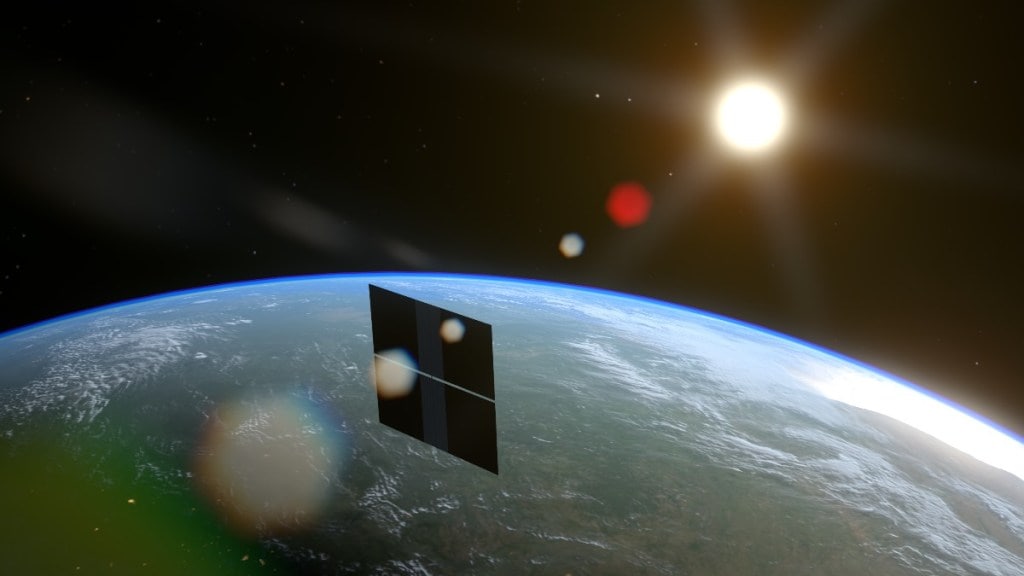Come November, and the world of AI will take a huge leap with Starcloud-1 – a tiny satellite the size of a mini refrigerator. This tiny metal box in space could help humans solve one of the biggest problems associated with AI and computing of the future – managing the huge demands of data centers.
As Starcloud-1 blasts into low-Earth orbit aboard a SpaceX Falcon 9 rocket, carrying an NVIDIA H100 GPU within, the world of computing hardware will take a huge leap ahead in server farm maintenance. For the first time, AI training, fine-tuning, and high-powered inference will happen not in a humming server farm in the midst of a field or a forest, but amid the vacuum of space, powered by endless sunlight and cooled by the cosmos itself.
For the test, engineers and scientists are relying on the NVIDIA H100 GPU – the most powerful processor ever to leave our atmosphere.
What is Starcloud-1?
Starcloud, a Redmond-based startup formerly known as Lumen Orbit, imagines a future where gigawatt-scale data centers float above the planet. A project like Starcloud promises to slash overall running costs by 20 times and eliminate the water-guzzling cooling systems that plague Earth-based facilities.
“In 10 years, nearly all new data centers will be built in outer space,” declares Philip Johnston, Starcloud’s co-founder and CEO, in a recent NVIDIA blog post.
At its core, Starcloud-1 is a proof-of-concept powerhouse for now. Weighing just 60 kilograms, the satellite packs an H100 GPU capable of up to 2,000 teraflops for AI workloads, which is a staggering 1,000-fold jump over the NVIDIA T4 GPUs aboard the International Space Station’s Spaceborne Computer-2.
The chip will run Google’s open-source Gemma model, a lightweight sibling of the Gemini family.
Will it do any experiments in space?
It will mark some historic firsts – the inaugural AI model training in orbit, fine-tuning beyond Earth’s gravity, and inference at unprecedented orbital speeds.
Early tests will process Earth observation data, like synthetic-aperture radar imagery, to generate real-time 3D maps for applications from wildfire detection to crop yield predictions. This should help in slashing response times from hours to minutes.
But why space?
It’s all about power, or the lack of it on Earth.
By 2045, global compute demands could rival the planet’s entire electricity output, warns Tom Mueller, SpaceX’s founding employee. Elon Musk predicts US grid shortages in two years while OpenAI’s Sam Altman calls for fusion breakthroughs. Even Meta’s Mark Zuckerberg hails energy as the ultimate bottleneck.
On Earth, solar panels operate at a mere 24% capacity, hampered by night, clouds, and dust. In a dawn-dusk Sun-Synchronous orbit, Starcloud-1 basks in near-constant sunlight – a 95% capacity factor, amplified by 40% due to the lack of atmosphere. As a result, energy costs plummet from $0.045 to $0.002 per kilowatt-hour, which is 22 times cheaper.
Space helps with cooling, too. Today’s datacenters guzzle 1.7 million tons of water annually for a 40-megawatt facility. In Earth’s orbit, heat dissipates directly into space via massive radiators, with no evaporation required. For a 5-gigawatt orbital satellite, these panels would span 4 kilometers square – roughly six square miles of deployable thin-film silicon cells. Each of them wafer slimmer than a human hair, and yields over 1,000 watts per kilogram.
Operating a 40-megawatt datacenter for a decade costs $167 million on Earth. In space, it just requires $8.2 million to operate, including launch fees, solar arrays, and radiation shielding.
Is space extremely data center-friendly?
Just like all living beings, data centers are also at risk from space radiation, which primarily emerges from solar flares and cosmic rays. These could flip bits in the H100 chip, which is ideally designed for air-conditioned racks. Starcloud’s team is betting on minimal shielding, relying on the GPU’s liquid cooling blocks for protection and AI’s tolerance for minor errors.








